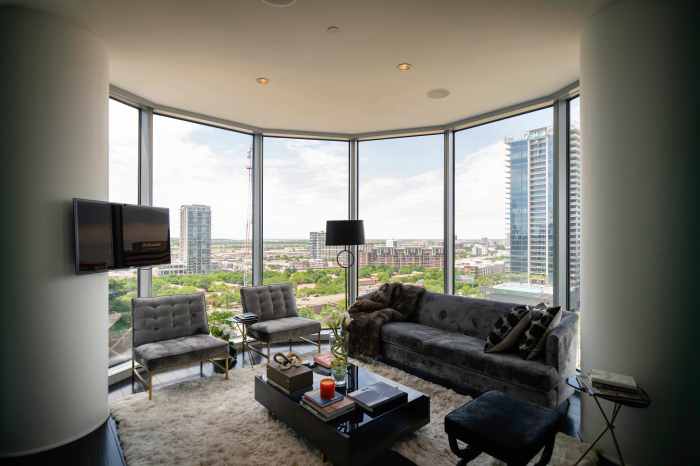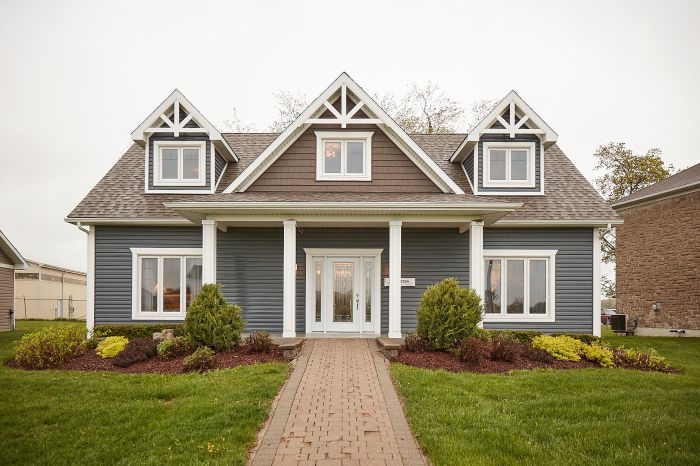Condo living benefits are increasingly capturing the attention of urban dwellers seeking a blend of convenience, community, and investment potential. As more individuals and families choose to reside in condominiums, it becomes imperative to understand what makes this lifestyle appealing. With lower maintenance costs, shared amenities, and the promise of a vibrant community, condo living is more than just a trend—it’s a lifestyle choice that offers numerous advantages.
From financial savings to the allure of luxury options, condo living provides a diverse range of benefits. Whether you’re a first-time buyer or a seasoned investor, exploring the multifaceted advantages of condominium living is essential in today’s real estate landscape.
Benefits of Condo Living
Condo living offers a unique blend of comfort, convenience, and community that appeals to a wide range of individuals, from young professionals to retirees. The financial and social advantages of living in a condominium make it an increasingly popular choice in urban areas.
Financial Advantages of Condo Living
One of the standout benefits of condo living is its financial appeal. Condos typically have lower maintenance costs compared to single-family homes. Homeowners are often responsible for yard work, roof repairs, and other exterior maintenance tasks, while many of these responsibilities are handled by the condo association in a condominium setting. This translates into lower monthly costs and reduced time spent on home upkeep.
Sense of Community
Living in a condo fosters a strong sense of community among residents. The shared spaces and amenities encourage social interaction, making it easier for neighbors to meet and form friendships. Regular community events and social gatherings organized by the condo association further enhance this sense of belonging.
Convenience of Shared Amenities
Condominiums often feature shared amenities that enhance the lifestyle of residents. Common facilities include swimming pools, gyms, and recreational rooms. Access to these amenities promotes a healthy lifestyle and provides leisure opportunities without the need for costly private memberships or installations.
Real Estate Agents in Condo Sales
The role of real estate agents in facilitating condo purchases is crucial. Their expertise can streamline the buying process, ensuring that potential buyers find the perfect property that meets their needs.
Facilitating Condo Purchases
Real estate agents specialize in navigating the complexities of real estate transactions, particularly in the condo market, which can be unique due to homeowners’ associations and specific regulations. Their knowledge helps buyers avoid common pitfalls and ensures a smoother transaction.
Finding the Right Condo
An experienced agent can help buyers identify condos that align with their lifestyle requirements, budget, and preferences. They take the time to understand what the buyer is looking for, whether it’s a certain number of bedrooms, proximity to work, or access to amenities.
Choosing a Knowledgeable Agent
Selecting a knowledgeable real estate agent is vital for navigating condo transactions. An agent familiar with local market trends, property values, and amenities can provide critical insights that benefit buyers in making informed decisions.
Investment Opportunities in Condominiums
Investing in condominiums presents numerous opportunities for financial gain, particularly through rental income. The potential for appreciation and cash flow make condos an attractive option for investors.
Potential for Rental Income
Condominiums often attract renters seeking affordable housing options in urban settings, leading to a steady demand for rentals. Investors gain the advantage of generating consistent rental income, which can significantly enhance their financial portfolio.
Advantages of Condos Over Other Properties
Compared to single-family homes, condominiums usually require less initial investment and offer lower maintenance responsibilities. This makes them accessible to a broader range of investors, especially those just starting in real estate.
Strategies for Investing
Successful investors often utilize strategies such as local market analysis, diversification within their portfolios, and leveraging financing options to maximize their investments in condominiums. By researching emerging neighborhoods and trends, investors can make strategic decisions to enhance their returns.
Luxury Condo Living
Luxury condominiums define contemporary urban living, offering high-end features and services that appeal to affluent buyers. These properties combine sophistication with convenience in prime locations.
Defining Features of Luxury Condominiums
Luxury condos typically include high-quality finishes, state-of-the-art appliances, and stunning architectural designs. Common features may include floor-to-ceiling windows, private balconies, and top-tier security systems.
Luxury Condos vs. Luxury Houses
While luxury houses provide space and privacy, luxury condos often offer amenities such as concierge services, pools, and fitness centers. This lifestyle convenience is appealing to busy professionals who prefer low maintenance and high accessibility.
Demand for Luxury Condos
Urban environments are witnessing a growing demand for luxury condominiums, driven by young professionals and retirees seeking downsized living without sacrificing lifestyle quality. Areas with robust job markets and cultural amenities are particularly attractive for luxury condo developments.
Residential Property Management
Effective property management is vital for maintaining the quality and performance of condominium communities. Professional management ensures that residents receive the best living experience possible.
Importance of Effective Management
A well-managed condominium can significantly enhance resident satisfaction and property values. Effective management addresses maintenance issues promptly, enforces community rules, and organizes events to foster resident engagement.
Best Practices for Managing Properties
Implementing best practices in property management includes regular communication with residents, conducting routine maintenance checks, and maintaining transparency regarding financial issues. Engaging residents in decision-making processes also enhances community trust.
Enhancing Tenant Satisfaction
Methods for improving tenant satisfaction include soliciting feedback on community needs, organizing social events, and ensuring common areas are well-maintained. Happy residents are more likely to renew leases and recommend the community to others.
Green Real Estate Trends in Condominiums
Sustainability is becoming an essential aspect of condo developments. Eco-friendly features not only benefit the environment but also appeal to environmentally-conscious buyers.
Growing Trend of Sustainability
The trend towards green living in condominiums includes the integration of energy-efficient appliances, sustainable building materials, and eco-friendly landscaping. These features reduce environmental impact and contribute to lower utility costs for residents.
Example of Eco-Friendly Features
Modern condos may include solar panels, rainwater harvesting systems, and electric vehicle charging stations. Such features not only promote sustainability but can also enhance the property’s marketability.
Benefits of Green Living
Residents of eco-friendly condominiums often enjoy lower energy costs and a smaller carbon footprint. Additionally, living in a sustainable community can foster a sense of pride and connection among residents who value environmental stewardship.
The Process of Leasing and Renting Condos
Understanding the leasing process is critical for prospective renters looking to secure a condominium. This knowledge ensures a smooth transition into their new home.
Steps to Leasing a Condo
Leasing a condo typically involves searching for available properties, submitting rental applications, and signing leases. It’s essential for renters to conduct thorough research and understand the leasing terms before committing.
Rights and Responsibilities
Both landlords and tenants have specific rights and responsibilities in condo rentals. Landlords are required to provide habitable living conditions, while tenants must adhere to community rules and pay rent on time.
Common Leasing Terms

Common terms in condominium leases may include duration of the lease, security deposit requirements, and rules regarding pets or alterations to the unit. Understanding these terms is vital for both parties to avoid disputes.
Marketing Strategies for Condo Sales
Effective marketing strategies are essential for selling condominiums in a competitive real estate market. Tailored approaches can significantly impact the success of condo sales.
Effective Marketing Techniques
Utilizing high-quality photography and virtual tours can attract potential buyers. Highlighting unique features and amenities in listings also plays a crucial role in capturing interest.
Role of Staging in Selling Condos
Staging a condo can make a significant difference in how buyers perceive the space. A well-staged unit allows potential buyers to envision themselves living there, often leading to quicker sales at higher prices.
Leveraging Online Platforms
Digital marketing strategies, including targeted social media advertising and listings on popular real estate websites, are vital tools for reaching a wider audience. Engaging with potential buyers online can enhance visibility and lead to successful sales.
Challenges of Condo Living
Condo living comes with specific challenges that residents must navigate. Being aware of these issues can help residents enjoy a more harmonious living experience.
Common Challenges Faced by Residents
Noise complaints, conflicts over shared amenities, and adherence to community regulations are common challenges faced by condo residents. These issues can arise from differing lifestyles and expectations among neighbors.
Solutions to Mitigate Conflicts
Open communication and established conflict resolution mechanisms can help mitigate disputes among residents. Organizing community meetings can also facilitate discussions and foster understanding.
Navigating Condo Associations
Understanding the rules and regulations set forth by condo associations is crucial for residents. Knowledge of these guidelines can prevent misunderstandings and promote a more enjoyable living environment.
The Future of Condo Living
The future of condominium living is poised for transformation as new trends and technologies emerge. Staying informed about these developments can benefit current and prospective residents.
Emerging Trends Shaping Condo Living
Trends such as smart home technology integration and increased demand for flexibility in living spaces are influencing the design and functionality of new condos. Developers are adapting to these changing preferences to attract buyers.
Technological Advancements
Advancements like smart thermostats, home automation systems, and app-controlled amenities are becoming standard in modern condominiums. These technologies enhance convenience and energy efficiency for residents.
Changes in Consumer Preferences
As urban living becomes increasingly desirable, consumer preferences are shifting towards properties that offer accessibility, community engagement, and sustainability. Developers are responding by creating condos that meet these evolving demands.
End of Discussion
In summary, the condo living benefits encapsulate a unique lifestyle that harmonizes financial savvy with a sense of belonging. As urban environments continue to evolve, the appeal of condominiums will remain strong, driven by their inherent advantages such as community living, shared resources, and investment opportunities. Embracing condo life means not only enjoying immediate perks but also investing in a future that values convenience and connectivity.
Answers to Common Questions
What are the financial benefits of condo living?
Lower maintenance costs and potential for rental income are key financial benefits of condo living.
How does condo living promote community?
Shared amenities and communal areas encourage interaction and foster relationships among residents.
What are the common amenities found in condos?
Typical amenities include pools, gyms, and communal lounges that enhance the living experience.
Are condos a good investment option?
Yes, condos often provide good rental returns and appreciate in value, making them a solid investment.
What challenges might residents face in condos?
Common challenges include noise, compliance with regulations, and navigating condo association rules.
